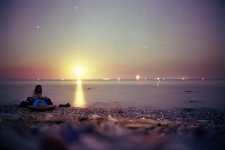R
ruben
Guest
According to my understanding of some paragraphs of the Yashica-Guy, within the different possible combinations of a GSN meter reading, you can choose the exact combination you want by the following way:
Let's say we are outdoors in a sunny day. I meter my subject and move the f/stop ring until the Red Magic Lamp lighthens. Let's say it happened at f/5.6 - then I know that if I go to f/8 I will be shooting at 1/500. If I go to f/11 I will be shooting at 1/250, etc.
My question is: Does it really works more or less, in practice ?
Thanks in advance,
Ruben
Let's say we are outdoors in a sunny day. I meter my subject and move the f/stop ring until the Red Magic Lamp lighthens. Let's say it happened at f/5.6 - then I know that if I go to f/8 I will be shooting at 1/500. If I go to f/11 I will be shooting at 1/250, etc.
My question is: Does it really works more or less, in practice ?
Thanks in advance,
Ruben

